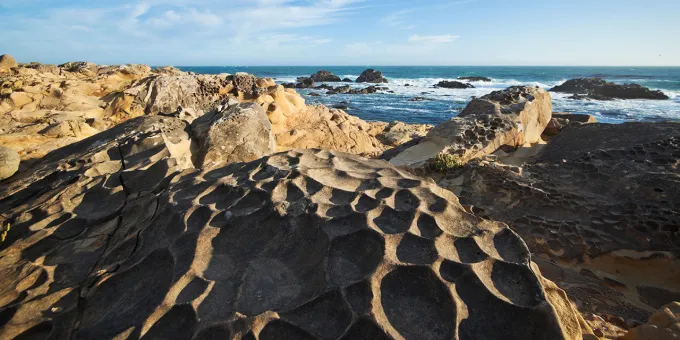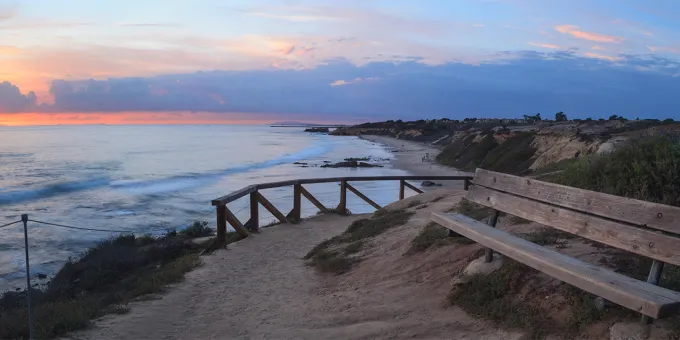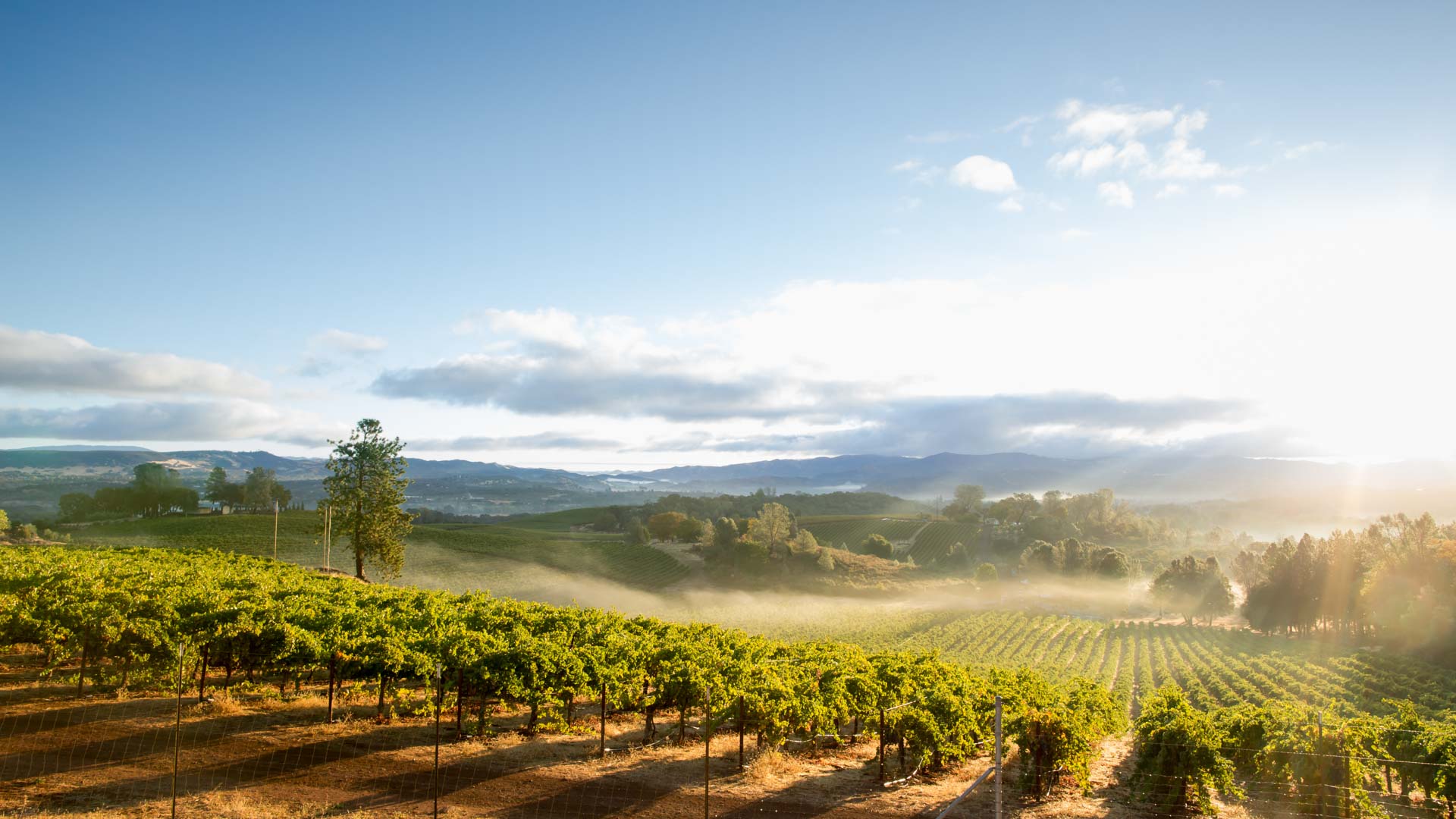California’s western border is edged by oceans, bays, and other tidal waterways—all populated with their own colorful residents. Depending on the location, you can see popsicle-orange garibaldi (California's state marine fish), barking elephant seals, sea lions, or anemones, as well as migrating whales and a skyful of seabirds.
The best way to experience these remarkable habitats is to visit one of the state’s 120-plus protected sanctuaries or preserves—not just to see wildlife, but to have fun, too. “There are places underwater and along the water to play, where you can kayak, scuba dive, surf, tide pool, and watch your kids build sand castles on the beach,” says Rikki Dunsmore, project manager at the California Marine Sanctuary Foundation.
We asked Dunsmore and her colleagues to pick 10 preserves that offer outstanding—and varied—ocean experiences. Some spots are in or near state parks with coast-hugging campsites. (Reserve well in advance for these choice spots, especially in summer.) Before you go, check the National Oceanic and Atmospheric Association’s tide tables for the area you plan to visit, too. Reef and beach areas might disappear under high tides, leaving you splashing in the surf, or worse yet, stranded as the tide comes in. Low tide, meanwhile, offers the best views and mellow fun. Here are the 10 picks, listed north to south:
Ten Mile Beach, Mendocino County
You’ll have plenty of use for binoculars at this stretch of rugged, unspoiled coastline that’s home to habitats galore. Roughly 18 miles north of Mendocino, the area actually consists of four reserves, including one of California’s least developed estuaries and one of its longest dune systems. Whales spout in the Pacific, seals loll along the rocky shore, river otters make their home in the estuary, and more than 90 species of birds live, nest, or make annual migratory stopovers here. It’s easy to visit, too—there’s plenty of parking at Ten Mile Estuary. (More: Ten Mile Beach)
Van Damme State Marine Conservation Area, Mendocino County
This wild and rocky wonderland is dotted with sea caves, making it a terrific destination for kayakers. Local outfitter Kayak Mendocino rents everything you need at adjacent Van Damme State Park; book a 90-minute guided kayak tour to get a close-up look at the caves and the resident seals and seabirds, along with brilliantly colored sea stars on the rocks. Or, explore the area’s 10 miles of hiking trails to see such intriguing oddities as the Pygmy Forest, populated by cypress trees as short as six inches. (More: Van Damme State Marine Conservation Area)
Salt Point State Marine Conservation Area, Jenner
Sea stacks and breakers abound along this shoreline within Sonoma County’s Salt Point State Park—including the rocky beach Gerstle Cove, which is also part of a state marine reserve. The swaying strands of bull kelp make this area popular with wetsuit divers, but everyone can enjoy the tide pools teeming with colorful sea stars, bizarre chitons, and scurrying crabs. Salt Point State Park contains about 20 miles of spectacular coastal trails, too. Be sure to visit the wooden deck at Sentinel Rock for ultra-scenic views of wave-washed sea stacks. (More: Salt Point State Marine Conservation Area)
Farallon Islands, Near Marin County
About 30 miles west of the Golden Gate Bridge, this archipelago is a veritable oceanic Eden. Part of the massive Greater Farallones National Marine Sanctuary, the uninhabited Farallon Islands are comprised of rocky outcroppings surrounded by pods of porpoises, dolphins, sea lions, and seals (along with migrating whales, depending on the season). The refuge also protects the largest seabird rookery in the contiguous U.S., with nesting species including tufted puffins, rhinoceros auklets, and pigeon guillemots. While the archipelago is remote, it’s not inaccessible: From May through November, take a full-day Oceanic Society wildlife cruise, departing from San Francisco or Sausalito. (More: Farallon Islands)
Fitzgerald Marine Reserve, Moss Beach
This San Mateo County—aka San Francisco Peninsula—reserve has some of the best tide pooling in California. At low tide, you can see crabs, sea stars, swaying anemones, and bat stars in the natural rocky reefs just offshore. In the shallow pools, look for bright-yellow sea lemons, algae-hoovering chitons, and turban snails. Keep in mind, though, as a marine protected area (MPA), visitors can look, but not touch. And if the tide is up? Take a stroll through the nearby grove of wind-carved Monterey cypress. From December through March, scan the horizon for the spouts of migrating gray whales. (More: Fitzgerald Marine Reserve)
Elkhorn Slough, Monterey County
You’ll hardly need binoculars at this expansive estuary in Monterey County: It’s easy to spot herons, egrets, and white pelicans—all part of the more than 300 species found here. Explore by foot along five miles of hiking trails that wind by tidal creeks, freshwater marshes, and oak woodlands. Or, see it from water: Watch for birds and sea otters from a 27-foot open-air pontoon boat with Elkhorn Slough Safari, or paddle yourself on a tour with Kayak Connection. (More: Elkhorn Slough)
Point Lobos State Natural Reserve, Carmel
Walk a poppy-trimmed path to the dramatic, limestone point at this Monterey County reserve: Below, you’ll see turquoise-blue water, long bands of bull kelp swaying in the waves, and possibly sea otters, harbor seals, sea lions, and, farther out, spouting whales. This is also a wonderful place for scuba diving—it’s an underwater tapestry of kelp, fish, nudibranchs, sea stars, and anemones. Just reserve well ahead of time; dives are limited to protect the delicate ecosystem. (More: Point Lobos State Natural Reserve)
Piedras Blancas, San Simeon
This under-the-radar refuge is an amazing wildlife experience—and as a nice bonus, it’s free. Five miles up the coast from Hearst Castle, up to 17,000 walrus-like elephant seals pile up on the narrow strip of rocky beach just steps from Highway 1. If you’re an animal lover, get ready to spend hours in this land-based seal rookery, where the West Coast’s largest pinnipeds breed, birth, molt, and rest—and unleash distinctive, roaring bellows that cut through the sound of crashing surf. Peak season is December through May; you may see smaller numbers of seals during other months. (More: Piedras Blancas)
Casino Point Marine Park, Catalina Island
A one-hour ferry ride from Long Beach, Catalina Island offers island-town charm, as well as this undersea world of enormous black sea bass, bright orange garibaldi, and two historic shipwrecks. Located next to the island’s landmark Casino building, Casino Point is a popular dive and snorkel spot, where you can also look for spiny lobsters and harmless horn sharks. Local outfitters like Catalina Divers Supply offer scuba and snorkeling rentals, as well as guided trips. If you don't want to get wet, take a ride in the one of the island's semi-submersibles. (More: Casino Point)
Crystal Cove State Marine Conservation Area, Laguna Beach
The tide pools along this three-mile stretch of Crystal Cove State Park are inhabited by anemones, sea stars, and hermit crabs. Time your visit to the Laguna Beach park for low tide, then head to Reef Point and Pelican Point to search for critters among the rocks and pools. Head into the water to look for bright orange garibaldis, bat rays, and other native fish, and—if you’re lucky—an octopus hiding in a rocky crevice. Stretch out your visit by staying in one of the park’s historic district cottages (be prepared to book way ahead) or pitch a tent at its campground. (More: Crystal Cove State Marine Conservation Area)
San Diego-Scripps Coastal Preserves, La Jolla
This San Diego complex of marine sanctuaries—some of the oldest in California—protects habitats ranging from sandy flats and rocky reefs to submarine canyons. It’s also a nice spot to see sea lions, dolphins, safe-to-swim-with leopard sharks, and—from December to April—migrating whales. Rent kayaks to nose along the rocky coast and look for sea caves: Local outfitters like La Jolla Kayak lead sea-cave tours, as well as snorkeling tours. Walk over to the neighboring Birch Aquarium for more up-close views of marine life. (More: San Diego-Scripps Coastal Preserves)


